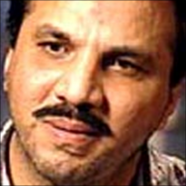Overview
Abdul Rahman Yasin is a U.S. citizen and fugitive under indictment for manufacturing bombs used in the February 1993 World Trade Center bombing that killed six people and wounded over 1,000 others. He was indicted by a Manhattan Federal grand jury in August 1993.“Most Wanted: Abdul Rahman Yasin,” Federal Bureau of Investigation, Accessed May 1, 2017, https://www.fbi.gov/wanted/wanted_terrorists/abdul-rahman-yasin;
Josh Meyer and Eric Lichtblau, “FBI Let Suspected Terrorist Get Away,” Los Angeles Times, October 12, 2001, http://articles.latimes.com/2001/oct/12/news/mn-56401.
Yasin fled to Iraq shortly after the bombing and was arrested by Iraqi authorities in 1994.Mike Sims, “Transcript: The Yasin Interview,” CBS News, June 2, 2002, http://www.cbsnews.com/news/transcript-the-yasin-interview/. In October 2001, he was sanctioned by the United Nations for his terrorist activities and association with known al-Qaeda operatives.“Narrative Summaries of Reasons for Listing,” United Nations, September 7, 2010, https://www.un.org/sc/suborg/en/sanctions/1267/aq_sanctions_list/summaries/individual/abdul-rahman-yasin. In Iraqi detention in May 2002, Yasin revealed in an interview with CBS that he had been interrogated and subsequently released by the FBI just days after the World Trade Center bombing.Mike Sims, “Transcript: The Yasin Interview,” CBS News, June 2, 2002, http://www.cbsnews.com/news/transcript-the-yasin-interview/.
Born in Bloomington, Indiana, in 1960, Yasin was raised in Iraq and returned to the United States in 1992 at the approximate age of 32. By his own account, Yasin came to live with his mother and brother in Jersey City, New Jersey, in order to work and receive treatment for his epilepsy.Mike Sims, “Transcript: The Yasin Interview,” CBS News, June 2, 2002, http://www.cbsnews.com/news/transcript-the-yasin-interview/. World Trade Center bombing mastermind Ramzi Yousef and fellow perpetrator Mohammed Salameh lived in the apartment above his. The men became friends and Yasin aided Yousef by purchasing chemicals and equipment and also helping to assemble an explosive in a separate apartment they had rented in Jersey City.Mike Sims, “Transcript: The Yasin Interview,” CBS News, June 2, 2002, http://www.cbsnews.com/news/transcript-the-yasin-interview/.
On February 26, 1993, Yasin and Yousef drove an explosives-laden vehicle into the basement garage of the World Trade Center’s north tower. The 1,500-pound bomb created a crater 200 feet by 100 feet, killing six people, injuring more than 1,000 others, and causing $500 million in damage.“Narrative Summaries of Reasons for Listing,” United Nations, September 7, 2010, https://www.un.org/sc/suborg/en/sanctions/1267/aq_sanctions_list/summaries/individual/abdul-rahman-yasin;
Robin Wright and John-Thor Dahlburg, “Legwork, Luck Closed Net Around Bombing Suspect: A mysterious informer’s tip capped an intense search for alleged mastermind of trade center blast,” Los Angeles Times, February 12, 1995, http://articles.latimes.com/1995-02-12/news/mn-31228_1_trade-center-bombing/2. The FBI arrested Yasin at his Jersey City apartment a few days after the bombing. During interrogations, Yasin provided information on Yousef, Salameh, and their rudimentary explosives laboratory.Mike Sims, “Transcript: The Yasin Interview,” CBS News, June 2, 2002, http://www.cbsnews.com/news/transcript-the-yasin-interview/. After his release Yasin flew to Iraq via Jordan.Mike Sims, “Transcript: The Yasin Interview,” CBS News, June 2, 2002, http://www.cbsnews.com/news/transcript-the-yasin-interview/;
Robin Wright and John-Thor Dahlburg, “Legwork, Luck Closed Net Around Bombing Suspect: A mysterious informer’s tip capped an intense search for alleged mastermind of trade center blast,” Los Angeles Times, February 12, 1995, http://articles.latimes.com/1995-02-12/news/mn-31228_1_trade-center-bombing/2.
According to the Iraqi intelligence agency Mukhabarat, Yasin was arrested in 1994 and held at a Mukhabarat facility— though he was not charged with a crime.Mike Sims, “Transcript: The Yasin Interview,” CBS News, June 2, 2002, http://www.cbsnews.com/news/transcript-the-yasin-interview/. While in detention in 2002, Yasin gave an interview to CBS.Mike Sims, “Transcript: The Yasin Interview,” CBS News, June 2, 2002, http://www.cbsnews.com/news/transcript-the-yasin-interview/. According to CBS, the government of then-President Saddam Hussain offered to turn Yasin over to the United States—though the exchange never transpired.Mike Sims, “Transcript: The Yasin Interview,” CBS News, June 2, 2002, http://www.cbsnews.com/news/transcript-the-yasin-interview/. Yasin disappeared from monitoring following the United States’ 2003 invasion of Iraq. His whereabouts are unknown.James Gordon Meek, “FBI’s Most Wanted Terrorists 15 Years Later: The Ones Who Got Away,” ABC News, October 25, 2016, http://abcnews.go.com/International/fbis-wanted-terrorists-15-years/story?id=43028355.
Associated Groups
- Extremist entity
- Unaffiliated
- Type(s) of Organization:
- N/A
- Ideologies and Affiliations:
- N/A
- Position(s):
- Suspected bomb maker in the 1993 World Trade Center bombing
- Extremist entity
- Al-Qaeda
- Read Threat Report
- Type(s) of Organization:
- Ideologies and Affiliations:
- Position(s):
- Suspected operative
History
United Nations

The United Nations added “Abdul Rahman Yasin” to its Al-Qaida Sanctions List.“Narrative Summaries of Reasons for Listing,” United Nations, September 7, 2010, https://www.un.org/sc/suborg/en/sanctions/1267/aq_sanctions_list/summaries/individual/abdul-rahman-yasin.
